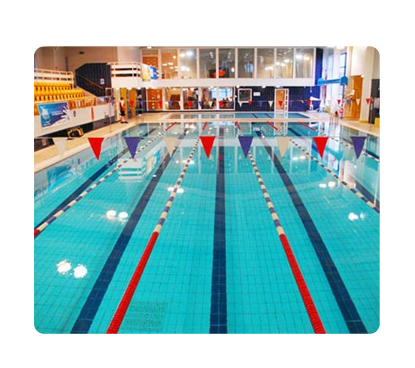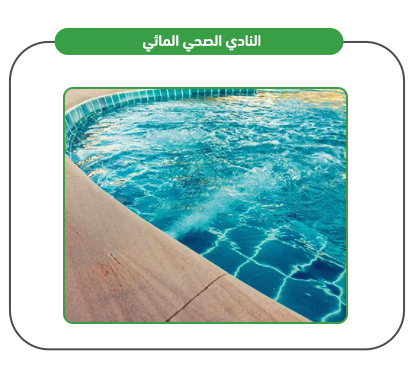It is an aquatic health club building. The aquatic health club consists of a ground floor in addition to two floors. The building includes several swimming pools on all floors. The ground floor includes the reception and various administrative offices in addition to a semi-Olympic swimming pool with international specifications and measurements, in addition to a changing room and restrooms.

The aquatic health club consists of a ground floor in addition to two floors. The building includes several swimming pools on all floors, the ground floor is a reception and various administrative offices in addition to a semi-Olympic swimming pool with international specifications and standards in addition to a changing room and restrooms. First floor: It consists of several swimming pools of different sizes, including all water gym equipment as well as VIP pools. In addition to restrooms, the second floor: It consists of several swimming pools of different sizes that include all water aerobics in addition to restrooms, and the idea of the project is considered new in the Arab countries, so it will receive great popularity by individuals.



A free-form swimming pool is available.
A semi-Olympic swimming pool is available.
Modern and advanced health and fitness equipment is available.
Experienced and qualified trainers are available.
An elevator is available in the health club building.
Modern surveillance and audio systems are available.
Fire protection and fire-fighting systems are available.
Executive summary
Study project services/products
Market Size Analysis
Risk Assessment
Technical study
Financial study
Organizational and administrative study

Service sector in GCC countries
According to the macroeconomic theory of sectors, the economy is divided into three main and large sectors: the first; – is the sector that is based on collecting raw materials and includes mining companies, timber companies, oil exploration companies, in addition to agricultural and fishing industries. The second sector; is the sector that depends on goods and their sale, such as: (car manufacturing, furniture, clothing trade… etc.). As for the third sector, known as the “services” sector; it is the sector responsible for providing and producing services, essentially relying on intangible things, such as: entertainment, health care, transportation, hospitality, restaurants, etc. This theory believes that the more advanced countries are, the more their economies are based on the third sector, unlike primitive countries, which rely mostly on the first sector (the United States of America, for example, the service sector constitutes 85% of its economy).
Kingdom of Saudi Arabia:
The State of Qatar:
Kuwait:
United Arab Emirates:
Sultanate of Oman:
Global Service Sector
The service sector is the major contributor to the world’s gross product; It alone accounts for more than three fifths of this output. The sector does not rely on the production of tangible goods such as automobile and furniture, but rather on the provision of intangible services such as banking, medical care, transportation, hospitality, leisure, etc. The value of the sector market was estimated in 2020 at USD 10,814.49 billion and rose to USD 11,780.11 billion in 2021. The market achieved a CAGR of 8.9%. After recovering from the effects of the coronavirus pandemic, global market experts expect the sector’s market to reach US $ 15683.84 billion by 2025, bringing the market to a CAGR of 7% in the coming years.
